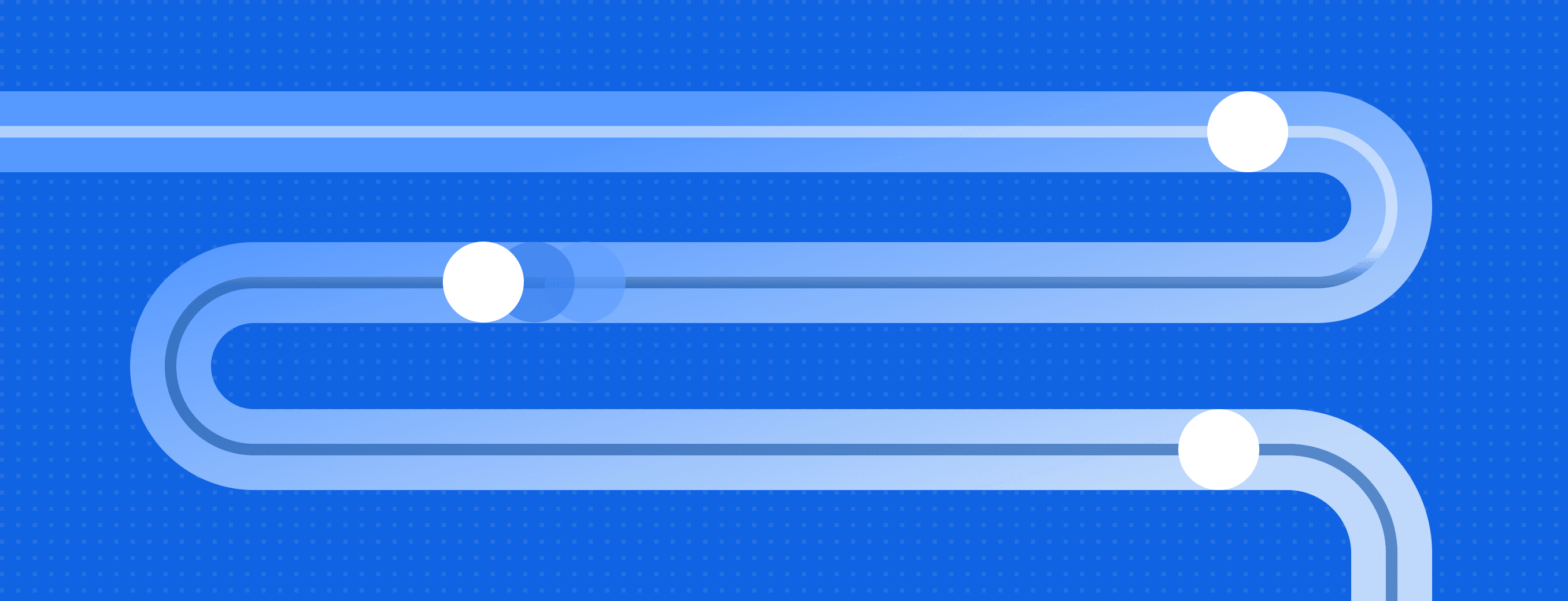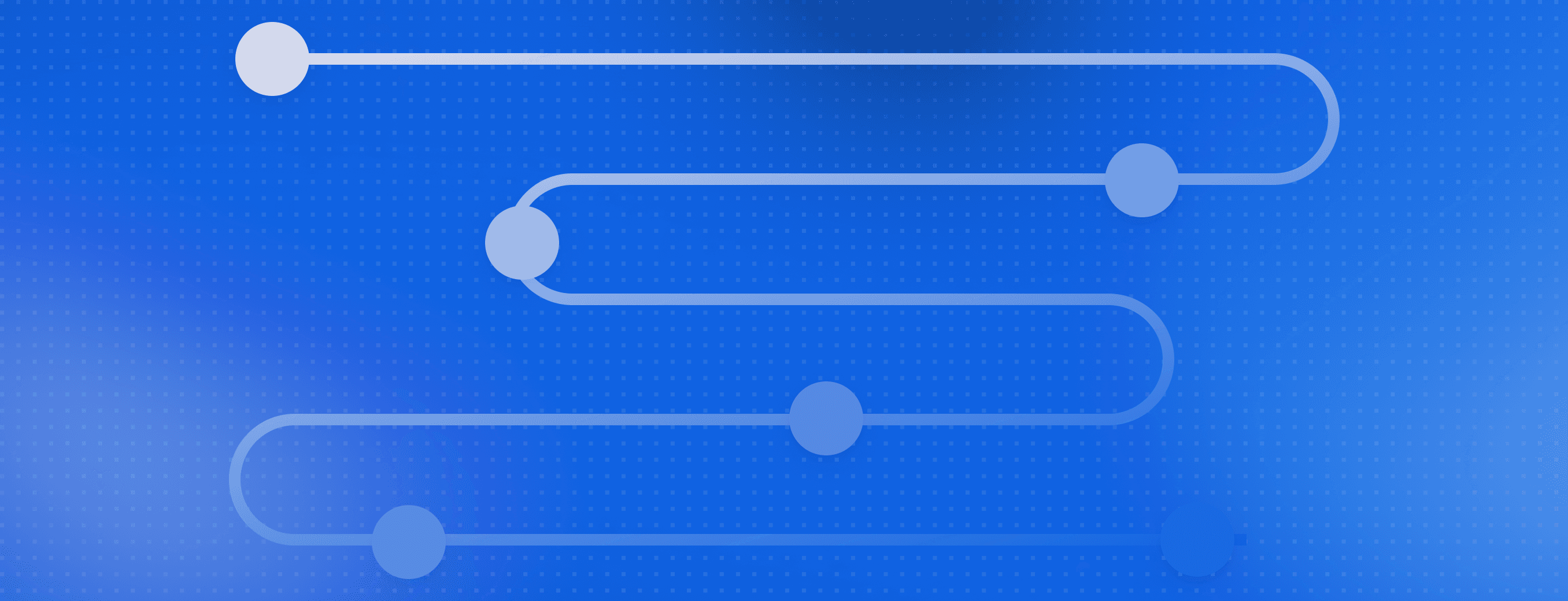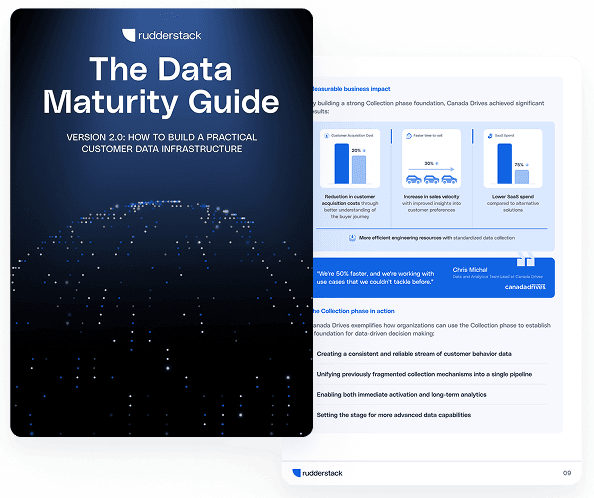Your practical roadmap to data maturity

Customer data is one of the most valuable assets for any business. But unlocking its full potential requires more than just collecting events and throwing them into a warehouse. Many teams find themselves stuck in reactive data fire drills, spending more time fixing broken pipelines or reconciling inconsistent metrics than delivering business value.
Sound familiar? You're not alone.
The hidden costs of data fragmentation
We recently surveyed 250+ data leaders and uncovered some telling statistics:
- Only 26% reported complete consistency in data definitions across departments
- 35% said some definitions were shared but not all
- Data engineering teams spend nearly two-thirds of their week on routine maintenance rather than business-critical work
These numbers reflect a broader reality: Organizations are drowning in data complexity. Teams waste hours weekly reconciling conflicting numbers. Meetings start with debates about whose metrics are correct instead of focusing on actionable insights. Engineering resources get consumed by maintaining brittle integrations rather than building innovative features.
The cost isn't just operational. It's strategic. When teams can't trust their data, they can't make confident decisions. When insights are trapped in silos, opportunities slip by. When personalization requires weeks of engineering work, competitors move faster.
Why data maturity matters now
Customer expectations are higher than ever. Growth teams need timely, accurate data to deliver personalized experiences, meet compliance standards, and drive better decisions. But the explosion of SaaS tools and siloed data systems has made it increasingly difficult to keep everything connected and consistent.
The traditional approach typically involves implementing everything at once or investing in a bloated, all-in-one platform, which often creates more problems than it solves. What's needed is a pragmatic, evolution-focused strategy that builds capabilities progressively.
Rather than trying to solve everything at once, successful organizations approach their data strategy in phases, evolving their infrastructure as their needs grow while maintaining strict governance and compliance throughout.
A four-phase framework for customer data maturity
We've worked with hundreds of data teams across industries—from startups to enterprises—and learned that most organizations follow a similar progression when modernizing their customer data infrastructure. The key is to move forward incrementally while building a strong foundation at each stage.
Here's the four-phase journey outlined in our Data Maturity Guide:
1. Collection: Build a unified, consistent event data layer that eliminates data inconsistencies and enables real-time activation across your entire stack.
2. Centralization: Move beyond point-to-point pipelines and establish a true single source of truth in your data warehouse or cloud platform, with bidirectional data flows.
3. Machine Learning: Use predictive modeling and AI to turn your centralized data into actionable insights that anticipate customer behaviors and drive proactive interventions.
4. Real-Time: Power immediate personalization and in-session experiences with low-latency infrastructure that delivers predictions in milliseconds, not minutes.
Each phase builds on the previous one, but not every organization needs to progress through all four stages. The framework helps you identify where you are today and what capabilities will deliver the most value for your specific business needs.
Real impact across industries
This isn't theoretical. We've seen the framework deliver measurable results:
- Canada Drives achieved a 20% reduction in customer acquisition costs and 23% decrease in inventory time-to-sell by building a strong Collection phase foundation
- InfluxData eliminated 5-10 hours of weekly data reconciliation by implementing proper Centralization
- Wyze increased data engineering productivity by 10x and AI/ML team productivity by 3x through their Machine Learning phase implementation
- loveholidays achieved 10x faster personalization (20ms vs 200ms) and a 2% conversion uplift with Real-Time capabilities
Governance at every step
Whether you're just getting started or exploring real-time personalization, one thing remains constant: strong data governance is essential. Privacy, compliance, and trust can't be bolted on later—they need to be part of your foundation from day one.
This is particularly critical for organizations in regulated industries, where inconsistent data creates not just operational challenges but compliance risks. By solving data quality and governance at the source, you create infrastructure that scales with controls intact.
What this blog series will cover
Over the next four posts, we'll break down each phase in detail, including:
- When to invest in each phase and key indicators that you're ready
- Common challenges and proven strategies to overcome them
- Real-world case studies from companies like Canada Drives, InfluxData, Wyze, and loveholidays
- Practical implementation steps to build scalable, governed infrastructure without overwhelming your team
- ROI considerations and how to measure success at each stage
Whether you're building your first tracking plan or orchestrating ML-powered campaigns, this series is designed to help you move forward confidently—without over-engineering your stack, sacrificing data control, or disrupting existing operations.
The goal isn't to adopt a particular architecture because it's considered "modern." It's to progressively evolve your infrastructure to solve real business problems while building toward future capabilities.
Ready to assess where you are in your data maturity journey? Download the full guide from the left side of this page or book a demo to learn more.
Published:
August 11, 2025

Understanding event data: The foundation of your customer journey
Understanding your customers isn't just about knowing who they are—it's about understanding what they do. This is where clean, accurate event data becomes a foundational part of your business strategy.

How AI data integration transforms your data stack
This article breaks down what AI data integration means, explores key benefits like faster time-to-insight and improved data quality, and walks through practical use cases and implementation strategies.

Behavioral segmentation: Examples, benefits, and tools
In this guide, you'll learn how behavioral segmentation works, explore real-world examples, and discover the tools modern teams use to power it. You'll also learn how RudderStack helps unify behavioral data across your entire stack in real time.






